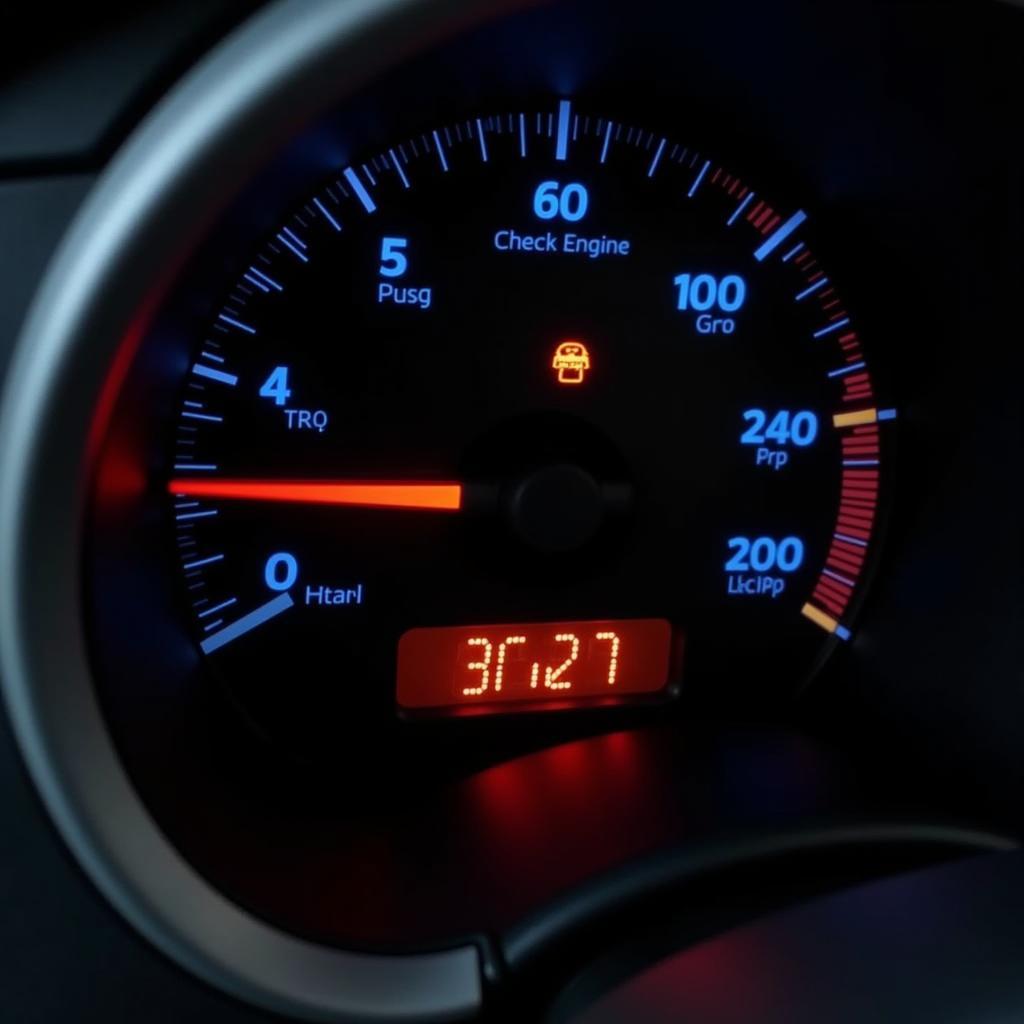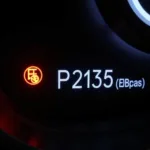One of the most frustrating things about car trouble is the cryptic error codes that often accompany it. If you own a Ford and have encountered the OBD2 code 327, you’re in the right place. This comprehensive guide will demystify this common code, explain its causes, and guide you toward a solution.
What Does OBD2 Code 327 Mean?
In simple terms, code 327 in your Ford vehicle points to an issue with the Exhaust Gas Recirculation (EGR) system. Specifically, it signifies that the Powertrain Control Module (PCM) – your car’s brain – has detected insufficient EGR flow.
But what does that actually mean? Let’s break it down:
- Exhaust Gas Recirculation (EGR): The EGR system is designed to reduce harmful nitrogen oxide (NOx) emissions. It does this by redirecting a small amount of exhaust gases back into the combustion chamber, effectively lowering combustion temperatures.
- Insufficient EGR Flow: Code 327 indicates that the expected amount of exhaust gas is not being recirculated. This could be due to a blockage in the system, a faulty EGR valve, or a problem with the sensor that monitors EGR flow.
Common Causes of OBD2 Code 327 in Ford Vehicles
Several culprits could trigger the 327 code in your Ford. Here are some of the most frequent:
- Clogged EGR Valve: Over time, carbon deposits from exhaust gases can accumulate and obstruct the EGR valve, preventing it from opening and closing properly.
- Faulty EGR Solenoid: The EGR solenoid controls the vacuum that opens and closes the EGR valve. If it malfunctions, the valve may not operate correctly.
- Vacuum Leaks: The EGR system relies on vacuum pressure to function. Any leaks in the vacuum lines or hoses can disrupt the system’s operation.
- Faulty DPFE Sensor: The Differential Pressure Feedback EGR (DPFE) sensor measures the pressure difference across the EGR orifice, indicating EGR flow. A faulty DPFE sensor can send inaccurate readings to the PCM, triggering the code.
- Wiring Issues: Damaged or corroded wiring and connectors within the EGR system can disrupt communication between the PCM and other components.
Symptoms You Might Notice Along with Code 327
Besides the dreaded check engine light, you might experience some of these symptoms if your Ford is struggling with code 327:
- Rough Idle: The engine might feel shaky or vibrate excessively when the vehicle is stopped.
- Engine Stalling: The engine might shut off unexpectedly, especially at low speeds or during idling.
- Poor Acceleration: You may notice a decrease in engine power and responsiveness when accelerating.
- Increased NOx Emissions: Though not immediately noticeable, your vehicle might fail an emissions test due to increased NOx emissions.
How to Diagnose OBD2 Code 327
While this guide provides helpful information, it’s essential to remember that diagnosing car trouble requires expertise. If you’re not comfortable working on your vehicle, seeking help from a qualified mechanic is always recommended.
Here’s a general approach a mechanic might take:
- Verify the Code: Using an OBD2 scanner, they’ll confirm the presence of code 327 and check for other related codes that might provide further clues.
- Inspect the EGR Valve: They will visually inspect the EGR valve for carbon buildup and check if it moves freely.
- Test the EGR Solenoid: They’ll test the EGR solenoid for proper electrical operation and vacuum control.
- Check for Vacuum Leaks: Using a vacuum gauge, they’ll inspect the vacuum lines and hoses connected to the EGR system for leaks.
- Inspect the DPFE Sensor: They’ll test the DPFE sensor for accurate readings and compare them to manufacturer specifications.
- Examine Wiring and Connectors: They’ll inspect the wiring harness and connectors associated with the EGR system for damage, corrosion, or loose connections.
Fixing OBD2 Code 327
The repair strategy depends entirely on the root cause identified during the diagnosis:
- Cleaning the EGR Valve: If carbon buildup is the culprit, a thorough cleaning might be enough to restore proper function.
- Replacing Faulty Components: If the EGR valve, EGR solenoid, DPFE sensor, or any other component is faulty, replacement will likely be necessary.
- Repairing Vacuum Leaks: Locating and repairing any vacuum leaks within the EGR system is crucial for its proper operation.
- Addressing Wiring Issues: Damaged wiring or connectors will need to be repaired or replaced to ensure seamless communication within the system.
After any repair, it’s essential to clear the code using an OBD2 adapter and take your Ford for a test drive to ensure the issue is resolved.
Expert Insights
“Many car owners underestimate the importance of regular maintenance,” says Mike Davis, a seasoned Ford mechanic with over 20 years of experience. “Regularly inspecting and cleaning the EGR system can prevent costly repairs down the line.”
He adds, “While some DIY enthusiasts might attempt repairs themselves, it’s crucial to have a solid understanding of the system and the right tools. When in doubt, consulting a professional is always the safest bet.”
Conclusion
Encountering OBD2 code 327 in your Ford might seem daunting, but armed with the right information, you can navigate the issue effectively. Remember, early diagnosis and repair are vital to prevent further damage to your vehicle’s engine and emissions system.
If you require professional assistance with diagnosing or fixing OBD2 code 327 in your Ford, our team at OBDFree is here to help. We offer expert advice, a wide selection of Bluetooth OBD2 scan tools, and resources to connect you with trusted mechanics.
FAQs about OBD2 Code 327
1. Can I drive my Ford with code 327?
While driving short distances might be possible, it’s not recommended. Ignoring the code can lead to more severe engine problems and potentially damage your catalytic converter.
2. How much does it cost to fix code 327?
The cost depends on the underlying cause and the specific Ford model. A simple EGR valve cleaning might cost less than $100, while replacing the EGR valve or other components could range from $200 to $500 or more.
3. Can a bad gas cap cause code 327?
No, a loose or faulty gas cap typically triggers codes related to the evaporative emissions system, not the EGR system.
4. How can I prevent code 327 from recurring?
Regular vehicle maintenance, including timely oil changes and using high-quality fuel, can help prevent carbon buildup in the EGR system.
5. Can I clean the EGR valve myself?
Cleaning the EGR valve requires some mechanical skill. If you’re comfortable working on your vehicle, you can find numerous online tutorials. However, if you’re unsure, it’s best to seek professional assistance.
Need assistance with OBD2 code 327 in your Ford? Contact our expert team via WhatsApp: +1(641)206-8880 or Email: [email protected]. We’re available 24/7 to offer guidance and support. Don’t forget to explore our website for more information on car diagnostics, OBD2 tools, and expert advice.


